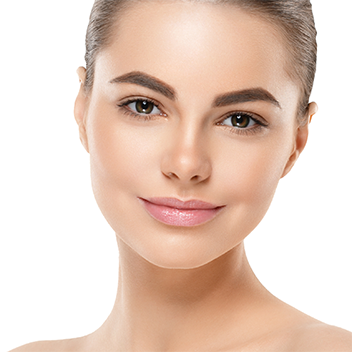Imagine if all you had to do was click your ruby slippers together and you suddenly had soft, glowing skin like Dorothy. Unfortunately, that’s fantasy. The reality is many have gone to great lengths (at great costs) to treat loose, wrinkled skin and eliminate dark, puffy bags beneath the eyes. Some have done everything shy of consulting a wizard.
Lasers, injections, and fillers – oh my! Lotions, and serums, and cleansers – oh my!
But what if you could drastically improve the look of your skin while relaxing at home or while sleeping? No, that’s not fantasy. There really is “no place like home” when it comes to addressing skin imperfections.
Research shows that airborne pollutants in the home are a major cause of skin damage as they can change the normal functions of skin lipids, acids, and proteins – causing skin aging, inflammation, discoloration, acne, enlarged pores, dryness, allergic reactions, even skin cancer. (1)
How exactly does the air damage skin?
First, gaseous contaminants in the air damage the skin’s surface. These are emitted from things such as gas appliances, wood products, insulation, pesticides, paint, furniture, and flooring, to name a few.
Then other, nongaseous pollutants penetrate the damaged skin and get trapped in the body, causing even more damage. It’s important to remember the skin is the body’s biggest organ and acts as a sponge for airborne pollutants.
Studies have shown that small particulate matter in the air causes oxidative stress, cellular dysfunction, even cell death. (2) It is small enough to enter the skin’s pores, and it is not easily removed with cleansers or washes. Things that produce small particulate matter include wildfires, cooking, fireplaces, stoves, candles, and chemical reactions from cleaning products and air fresheners.
What’s more, air pollution can trigger an inflammatory response where blood vessels under the eyes swell and create a puffy appearance. Some pollutants can cause an allergic reaction triggering the release of histamines which also create inflammation.
This begs the question: if exposure to airborne pollutants isn’t reduced, can cosmetic products and procedures ever “really” heal the skin? Or is it fantasy?
Subhead
To really heal the skin, you must first stop the damage from occurring. In the case of indoor air pollution that means implementing air purification in the home. And not just “any” air purification. It’s important to consider an air purifier like the Austin Air Healthmate Plus® that not only cleans the air of large particles like dust and dander, but also smaller particles such as formaldehyde, VOCs, chemicals, and gases, which cause the most damage to the skin.
The Healthmate Plus® is specifically designed for highly contaminated indoor air conditions with an exceptional capacity for removing VOCs. It uses a 360-degree intake system that draws air into all sides of the machine. Then it passes the air through a 4-stage medical-grade HEPA and activated carbon filter. The result is cleaner air – and likely healthier, more glowing skin.
References:
